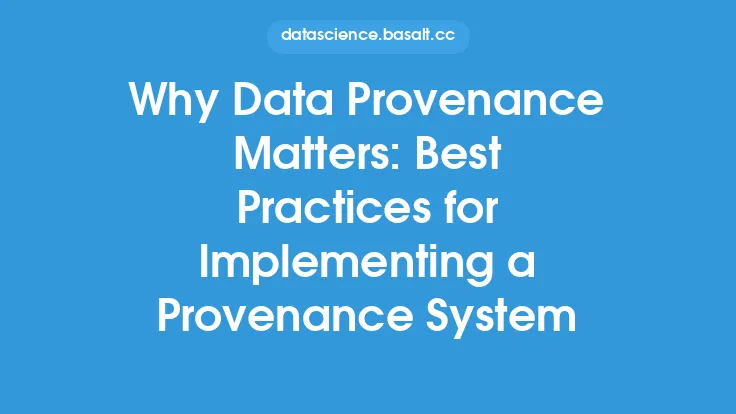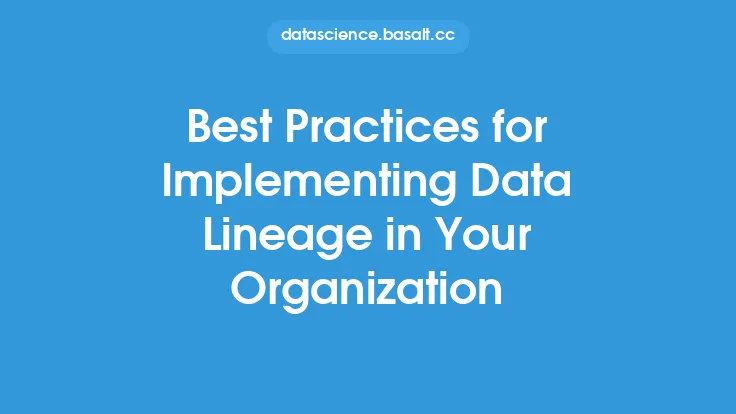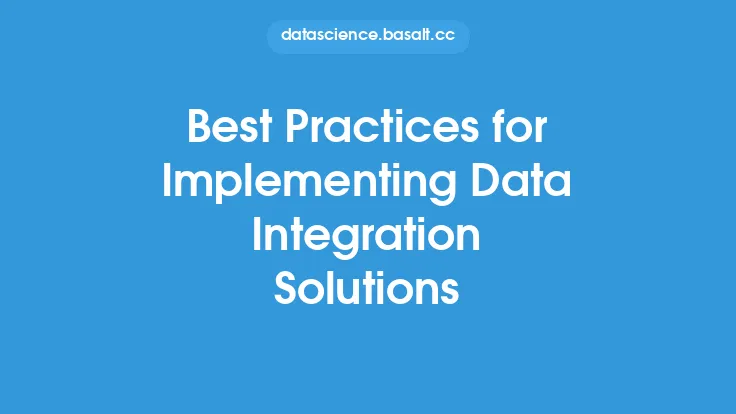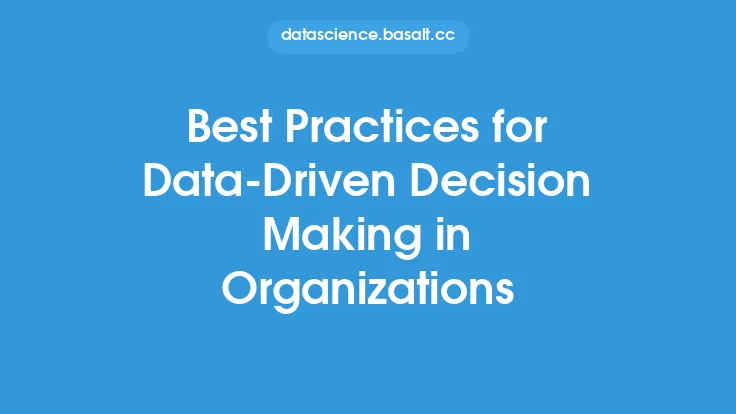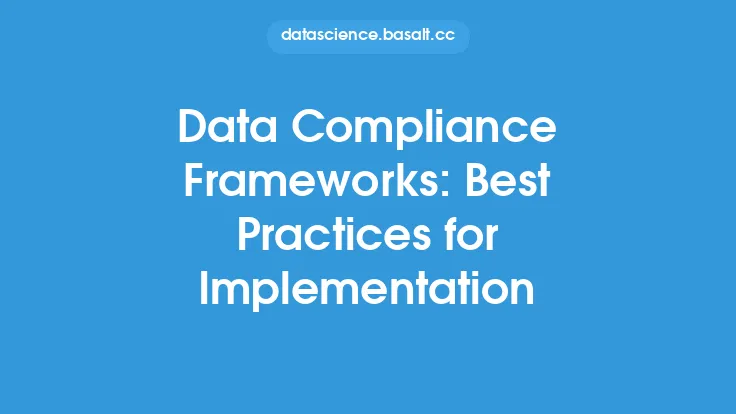Implementing data standards is a critical aspect of data governance, as it enables organizations to ensure consistency, accuracy, and reliability in their data management practices. Data standards provide a common language and framework for collecting, storing, and exchanging data, which is essential for making informed business decisions, improving data quality, and reducing errors. In this article, we will discuss the best practices for implementing data standards in organizations, highlighting the key steps, challenges, and benefits of adopting a standardized approach to data management.
Introduction to Data Standards Implementation
Implementing data standards requires a thorough understanding of the organization's data landscape, including the types of data collected, stored, and used, as well as the various stakeholders involved in the data management process. It is essential to identify the key data elements, such as customer information, product data, and financial transactions, and to establish clear definitions, formats, and validation rules for each data element. This involves developing a data standards framework that outlines the organization's data management policies, procedures, and guidelines.
Assessing Data Management Maturity
Before implementing data standards, organizations need to assess their current data management maturity level. This involves evaluating the organization's data governance structure, data quality, data security, and data compliance practices. The assessment should identify areas of strength and weakness, as well as opportunities for improvement. This will help organizations to prioritize their data standards implementation efforts and to develop a roadmap for achieving their data management goals.
Developing a Data Standards Framework
A data standards framework is a critical component of implementing data standards in an organization. The framework should outline the organization's data management policies, procedures, and guidelines, including data quality, data security, and data compliance requirements. The framework should also define the roles and responsibilities of various stakeholders involved in the data management process, including data owners, data stewards, and data users. The framework should be flexible and adaptable to changing business needs and should be regularly reviewed and updated to ensure that it remains relevant and effective.
Establishing Data Governance Structure
A well-defined data governance structure is essential for implementing data standards in an organization. The structure should include a data governance council, data stewards, and data owners, each with clearly defined roles and responsibilities. The data governance council should be responsible for overseeing the development and implementation of data standards, while data stewards should be responsible for ensuring that data standards are adhered to and that data quality is maintained. Data owners should be responsible for ensuring that data is accurate, complete, and up-to-date.
Data Standards Implementation Roadmap
Developing a data standards implementation roadmap is critical to ensuring that the implementation process is successful. The roadmap should outline the key steps, timelines, and resources required for implementing data standards. The roadmap should also identify potential risks and challenges and should outline mitigation strategies. The roadmap should be regularly reviewed and updated to ensure that it remains on track and that any changes or deviations are addressed promptly.
Data Quality and Validation
Data quality and validation are critical components of implementing data standards. Data quality refers to the accuracy, completeness, and consistency of data, while data validation refers to the process of checking data for errors and inconsistencies. Organizations should establish clear data quality and validation rules, including data formatting, data normalization, and data transformation rules. Data quality and validation should be performed at various stages of the data management process, including data collection, data storage, and data exchange.
Data Security and Compliance
Data security and compliance are essential components of implementing data standards. Organizations should establish clear data security policies and procedures, including data encryption, data access controls, and data backup and recovery procedures. Organizations should also ensure that they comply with relevant data protection regulations, such as the General Data Protection Regulation (GDPR) and the Health Insurance Portability and Accountability Act (HIPAA).
Monitoring and Enforcement
Monitoring and enforcement are critical components of implementing data standards. Organizations should establish clear monitoring and enforcement procedures, including data quality checks, data validation rules, and data security audits. Organizations should also establish clear consequences for non-compliance, including disciplinary actions and remediation plans. Monitoring and enforcement should be performed regularly to ensure that data standards are adhered to and that data quality is maintained.
Benefits of Implementing Data Standards
Implementing data standards offers numerous benefits to organizations, including improved data quality, increased data consistency, and enhanced data reliability. Data standards also enable organizations to improve their data governance practices, reduce errors, and increase efficiency. Additionally, data standards enable organizations to improve their decision-making capabilities, enhance their customer experience, and increase their competitiveness.
Challenges and Limitations
Implementing data standards can be challenging, and organizations may face several limitations, including resistance to change, lack of resources, and technical complexities. Organizations may also face challenges in integrating data standards with existing systems and processes, as well as in ensuring that data standards are adhered to by all stakeholders. To overcome these challenges, organizations should establish clear communication channels, provide training and support, and ensure that data standards are aligned with business objectives.
Conclusion
Implementing data standards is a critical aspect of data governance, and organizations should prioritize the development and implementation of data standards to ensure consistency, accuracy, and reliability in their data management practices. By following the best practices outlined in this article, organizations can establish a robust data standards framework, ensure data quality and validation, and maintain data security and compliance. While implementing data standards can be challenging, the benefits of improved data quality, increased data consistency, and enhanced data reliability make it a worthwhile investment for organizations seeking to improve their data governance practices and achieve their business objectives.
